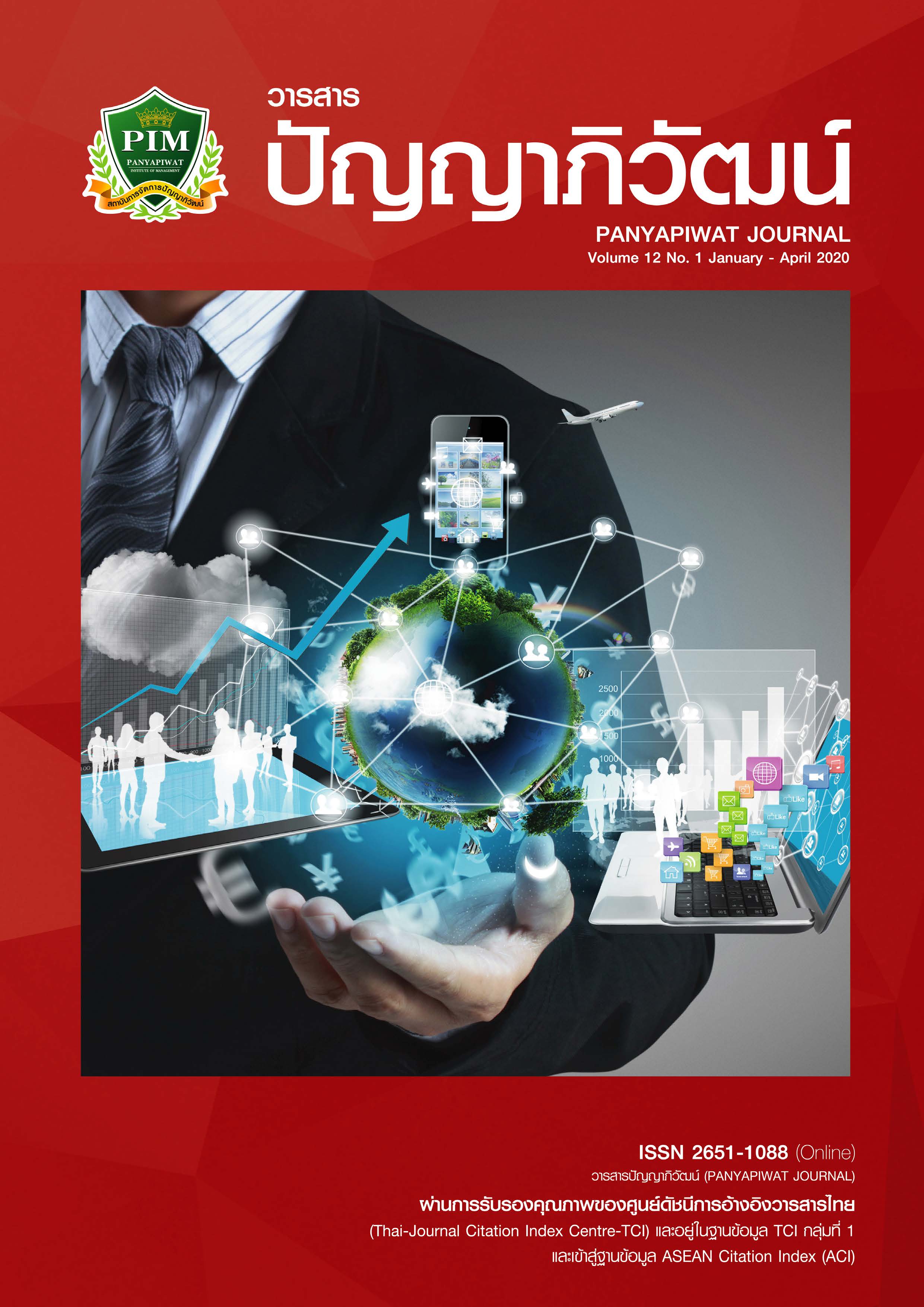IMPACT OF TOP MANAGEMENT TEAM HETEROGENEITY ON CORPORATE VALUE IN CHINESE LISTED COMPANIES: THE MODERATING EFFECT OF EXECUTIVE SHAREHOLDING AND OWNERSHIP CONCENTRATION
Main Article Content
บทคัดย่อ
In the era of innovation and development in China, top management team (TMT) plays an increasingly important role in corporate value. Based on the Upper Echelons Perspective Theory, this paper explores the direct impact of top management team heterogeneity on corporate value, and verifies the moderating role of executive shareholding and ownership concentration. Based on the empirical analysis of 6597 panel data of Chinese listed companies from 2010-2014, this paper finds that the TMT tenure heterogeneity and TMT functional experience heterogeneity are positively correlated with corporate value, while the TMT educational level heterogeneity is negatively correlated with corporate value. Also, there is a very interesting discovery: executive shareholding and ownership concentration did not strengthen the positive impact of TMT heterogeneity on corporate value, but strengthened the negative significant impact of TMT educational level heterogeneity on corporate value. The results of the study provide a very meaningful practical reference for corporate governance in Chinese listed companies.
Article Details
“ข้าพเจ้าและผู้เขียนร่วม (ถ้ามี) ขอรับรองว่า บทความที่เสนอมานี้ยังไม่เคยได้รับการตีพิมพ์และไม่ได้อยู่ระหว่างกระบวนการพิจารณาลงตีพิมพ์ในวารสารหรือแหล่งเผยแพร่อื่นใด ข้าพเจ้าและผู้เขียนร่วมยอมรับหลักเกณฑ์การพิจารณาต้นฉบับ ทั้งยินยอมให้กองบรรณาธิการมีสิทธิ์พิจารณาและตรวจแก้ต้นฉบับได้ตามที่เห็นสมควร พร้อมนี้ขอมอบลิขสิทธิ์บทความที่ได้รับการตีพิมพ์ให้แก่สถาบันการจัดการปัญญาภิวัฒน์หากมีการฟ้องร้องเรื่องการละเมิดลิขสิทธิ์เกี่ยวกับภาพ กราฟ ข้อความส่วนใดส่วนหนึ่งและ/หรือข้อคิดเห็นที่ปรากฏในบทความข้าพเจ้าและผู้เขียนร่วมยินยอมรับผิดชอบแต่เพียงฝ่ายเดียว”
เอกสารอ้างอิง
Burkart, M., Gromb, D. & Panunzi, F. (1997). Large shareholders, monitoring, and the value of the firm. The quarterly journal of economics, 112(3), 693-728.
Carpenter, M. A. (2002). The implications of strategy and social context for the relationship between top management team heterogeneity and firm performance. Strategic Management Journal, 23(3), 275-284.
Carpenter, M. A., Geletkanycz, M. A. & Sanders, W. G. (2004). Upper echelons research revisited: Antecedents, elements, and consequences of top management team composition. Journal of Management, 30(6), 749-778.
Fama, E. F. & Jensen, M. C. (1983). Separation of ownership and control. The Journal of Law and Economics, 26(2), 301-325.
Hambrick, D. C. & Mason, P. A. (1984). Upper Echelons: The organization as a reflection of its top managers . Academy of Management Review, 9(2), 193-206.
Hambrick, D. C. (1994). Top management groups: A conceptual integration and reconsideration of the “team” label. Research in Organizational Behavior, 16, 171-171.
Hambrick, D. C., Cho, T. S. & Chen, M. J. (1996). The influence of top management team heterogeneity on firms’ competitive moves. Administrative Science Quarterly, 4(41), 659-684.
Hmieleski, K. M. & Ensley, M. D. (2007). A contextual examination of new venture performance: Entrepreneur leadership behavior, top management team heterogeneity, and environmental dynamism. Journal of Organizational Behavior: The International Journal of Industrial, Occupational and Organizational Psychology and Behavior, 28(7), 865-889.
Jensen, M. C. & Meckling, W. H. (1976). Theory of the firm: Managerial behavior, agency costs and ownership structure. Journal of financial economics, 3(4), 305-360.
Masson, R. T. (1971). Executive motivations, earnings, and consequent equity performance. Journal of Political Economy, 79(6), 1278-1292.
Milliken, F. J. & Martins, L. L. (1996). Searching for common threads: Understanding the multiple effects of diversity in organizational groups. Academy of Management Review, 21(2), 402-433.
Morck, R., Shleifer, A. & Vishny, R. W. (1988). Management Ownership and Market Valuation: An empirical analysis. Journal of Financial Economics, 20(88), 93-315.
Richard, O. C. & Shelor, R. M. (2002). Linking top management team age heterogeneity to firm performance: Juxtaposing two mid-range theories. International Journal of Human Resource Management, 13(6), 958-974.
Simons, T. (1995). Top management team consensus, heterogeneity, and debate as contingent predictors of company performance: the complimentarity of group structure and process. In Academy of Management Proceedings (pp. 62-66). Briarcliff Manor, NY 10510: Academy of Management.
Wiersema, M. F. & Bantel, K. A. (1993). Top management team turnover as an adaptation mechanism: The role of the environment. Strategic Management Journal, 14(7), 485-504.
Williams, K. Y. & O'Reilly III, C. A. (1998). Demography and Diversity in Organizations: A Review of 40 Years of Research. Research in organizational behavior, 20, 77-140.
Zenger, T. R. & Lawrence, B. S. (1989). Organizational demography: The differential effects of age and tenure distributions on technical communication. Academy of Management Journal, 32(2), 353-376.


